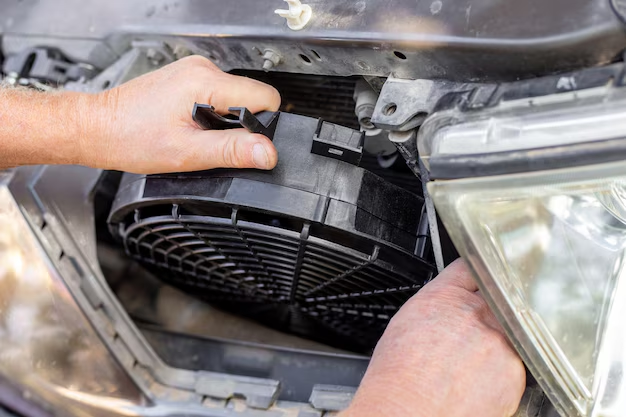Mastering Refrigerator Maintenance: A Step-by-Step Guide to Replacing Your Refrigerator Filter
For many households, the refrigerator is a cornerstone of daily life, keeping food fresh and water clean. But maintaining your fridge's optimal performance doesn't stop at the surface. An often-overlooked component—the refrigerator water filter—plays a crucial role in ensuring the quality and taste of your water and ice. Understanding how to replace a refrigerator filter is essential for both appliance longevity and your family’s health. Let's dive into how you can effortlessly handle this task and ensure your refrigerator runs smoothly.
Why Replacing Your Refrigerator Filter Matters
Refrigerator filters are key in removing impurities such as chlorine, lead, and other contaminants from your water, enhancing its taste and smell. Over time, however, these filters can become saturated and less effective, impacting water quality. Ensuring you replace the filter regularly will:
- Improve Water Quality: Fresh filters prevent pollutants from contaminating your drinking water.
- Maintain Appliance Efficiency: Clean filters ensure optimal water flow and ice production.
- Protect Your Health: Reducing harmful contaminants in your water contributes to overall well-being.
Recognizing the Signs for a Filter Change
Many manufacturers recommend replacing the refrigerator filter every six months. However, knowing exactly when to change it can be slightly more nuanced. Here are some telltale signs:
- Unpleasant Tastes or Odors: A notable change in the taste or smell of water or ice.
- Lower Water Pressure: Reduced water flow when dispensing from the refrigerator indicates a clogged filter.
- Indicator Light: Most modern fridges come with a filter indicator light alerting you when it's time for a replacement.
How to Find the Right Filter for Your Refrigerator
Locating the right replacement filter might seem overwhelming, but it's simpler than you think!
Checking Your Model and Filter Type
- Manufacturer’s Manual: Start by consulting your refrigerator's user manual, which often includes details on compatible filters.
- Model Number: Identify your fridge's model number, typically found on a sticker inside the fridge door or near the vegetable crisper.
- Filter Location: Different models have different filter placements—inside the fridge compartment, in the base grille, or behind the unit.
Buy Wisely
To ensure compatibility, purchase the filter from a reliable seller. You may find filters at:
- Online Retailers
- Appliance Parts Stores
- Directly from the Manufacturer
Step-by-Step Guide to Replacing Your Refrigerator Filter
Before you begin, gather the essential tools: the replacement filter, a towel, and potentially a jug to capture residual water.
1. Preparing for the Replacement
- 👟 Turn Off the Water Supply: This prevents leaks or spills.
- 📦 Remove the Old Filter: Depending on your filter's location:
- Base Grille Filters: Turn the cap counter-clockwise to unlock and remove.
- Compartment Filters: Pop the cover open and pull the filter out.
- 🔥 Press the Water Dispenser: To release any internal pressure.
2. Installing the New Filter
- Inspect the New Filter: Ensure the seals are intact and free from damage.
- Insert the Filter:
- Align the new filter properly.
- For grille filters, twist clockwise until secured.
- For compartment filters, simply pop it into place.
- Turn the Water Supply Back On: Check for leaks.
3. Flushing the Filter
Once installed, it's important to flush the new filter by running a few gallons of water through it. This removes any carbon dust or residues from manufacturing.
4. Resetting the Filter Indicator Light
Consult your fridge’s user manual for resetting this light—it’s often a simple press of a button.
Practical Tips for Smooth Maintenance
Staying on top of filter changes can save you time and worry in the long run. Here are some smart maintenance strategies:
- 📅 Set Calendar Reminders: Use smartphone alerts for filter changes every six months.
- 👌 Stock Up on Filters: Keeping a spare filter on hand avoids last-minute rushes.
- 🗂️ Keep Instructions Handy: Maintaining a folder with manuals and receipts helps track purchase details.
Common Questions about Refrigerator Filters
Here are some FAQs that offer insights to readers new to handling refrigerator filters:
Will A Dirty Filter Affect My Refrigerator?
Yes, a clogged filter can burden your refrigerator by reducing water pressure and affecting ice production, eventually straining the appliance.
Can I Run My Fridge Without a Water Filter?
While some refrigerators have a bypass plug option, it's generally not advisable to omit the filter altogether, as water quality will be compromised.
Are All Refrigerator Filters the Same?
Not all filters are created equal; each is specifically designed to fit certain refrigerator models and effectively target a particular range of contaminants.
Summary: Take Control of Your Refrigerator’s Health
Here's a quick guide highlighting key points to remember about refrigerator filter maintenance:
- 🔍 Check Your Model: Identify the correct filter type using your refrigerator’s model number.
- 📆 Regular Replacement: Change your filter approximately every six months.
- 🔄 Know the Signs: Look for taste changes, water pressure drops, and indicator alerts.
- 🚰 Flush New Filters: After installation, always run water through your new filter.
- 🔧 Empower Yourself: Have confidence in maintaining your essential appliance.
By managing your refrigerator’s filter proactively, you ensure high-quality water and ice, elongate the life of your appliance, and gain peace of mind. As simple as these steps might seem, they make a significant impact on your home’s everyday convenience and safety.
